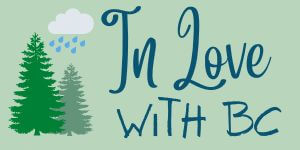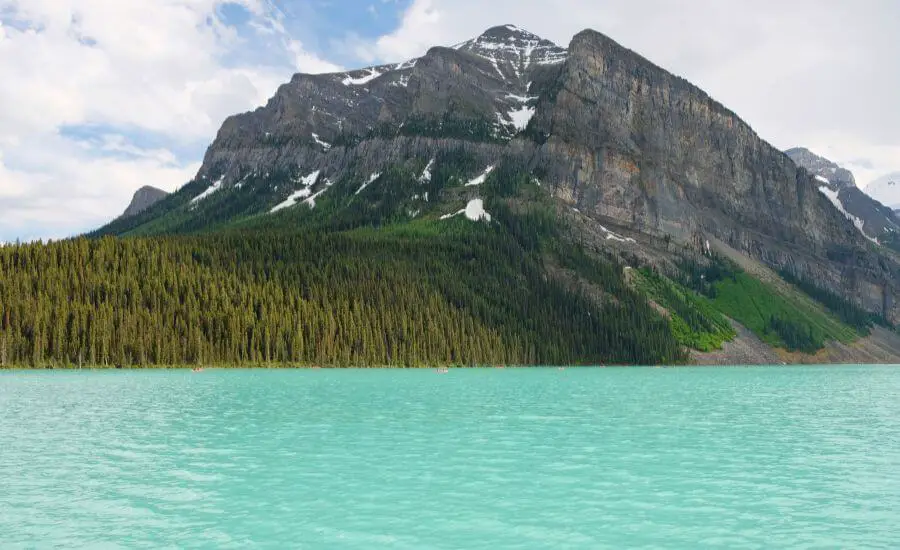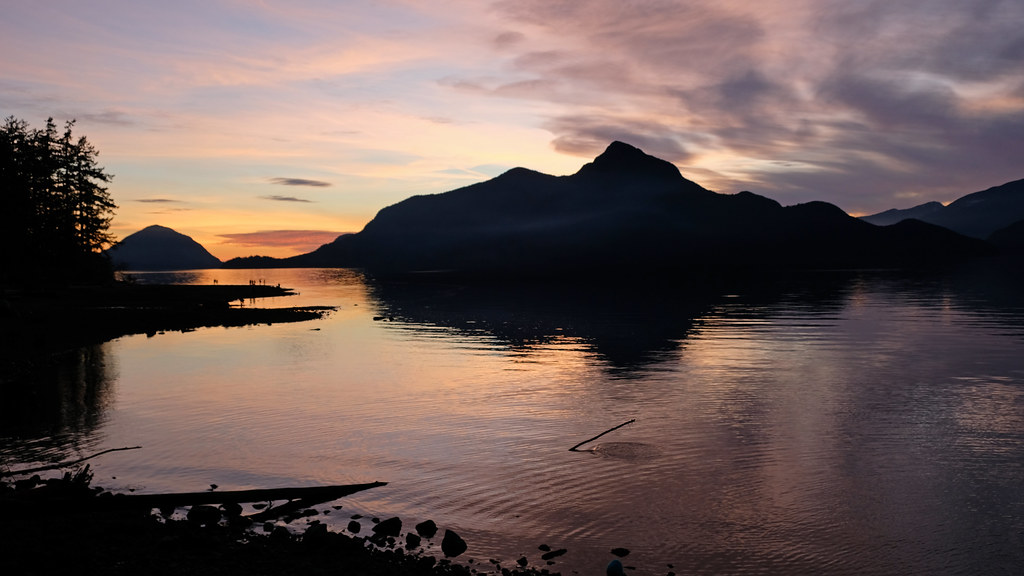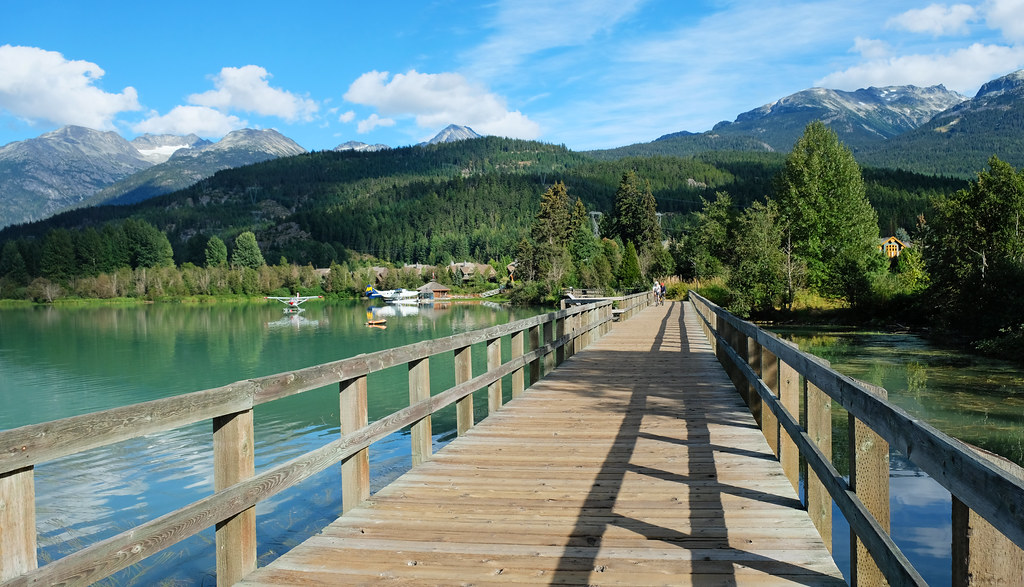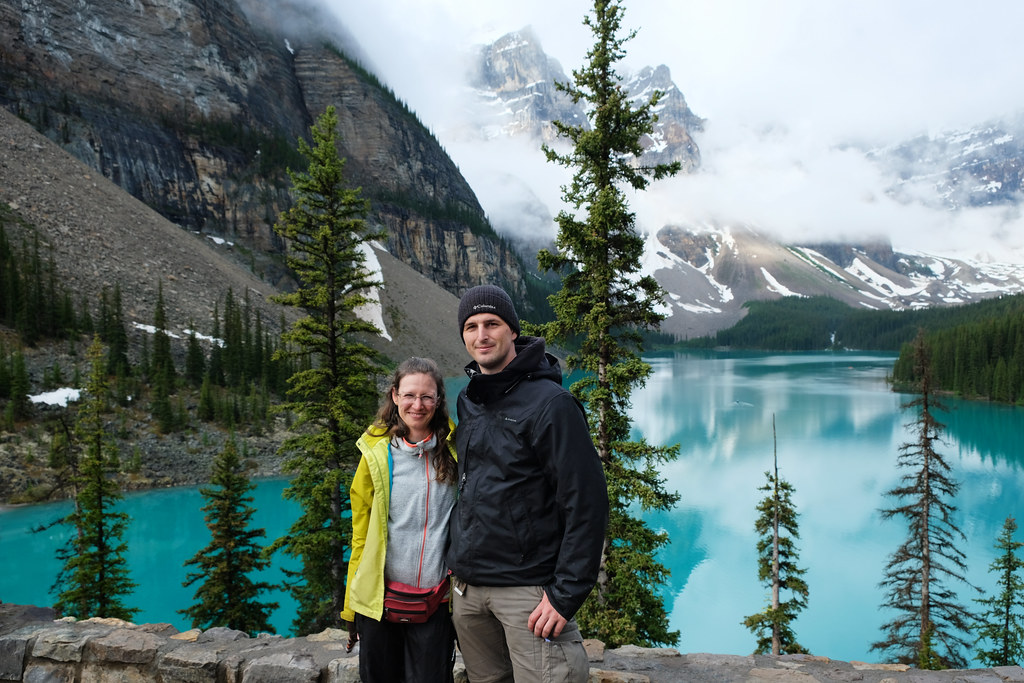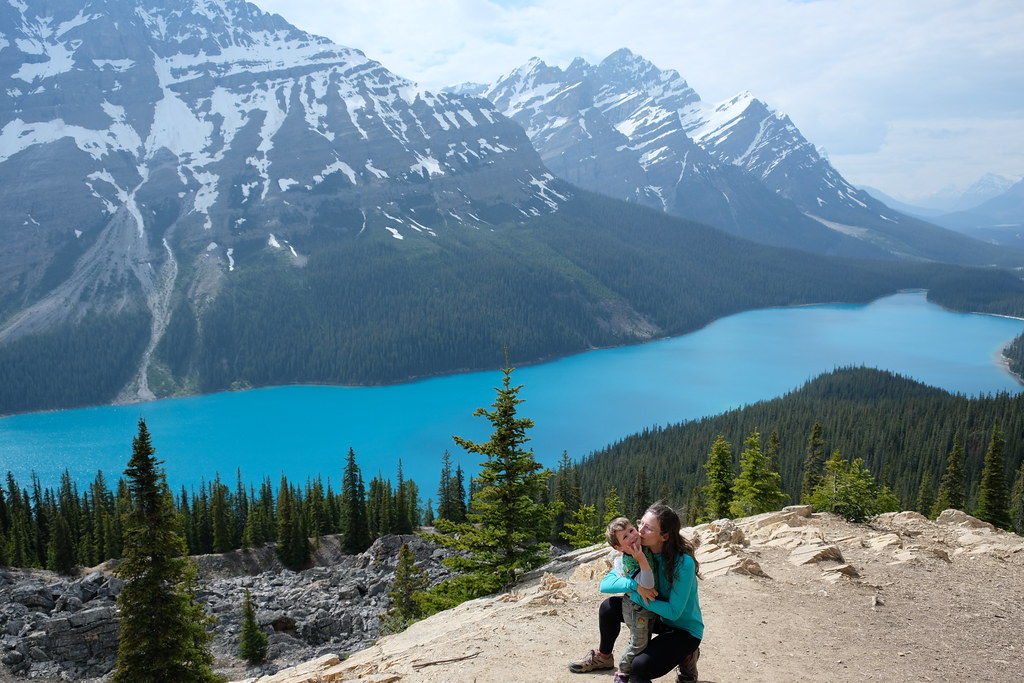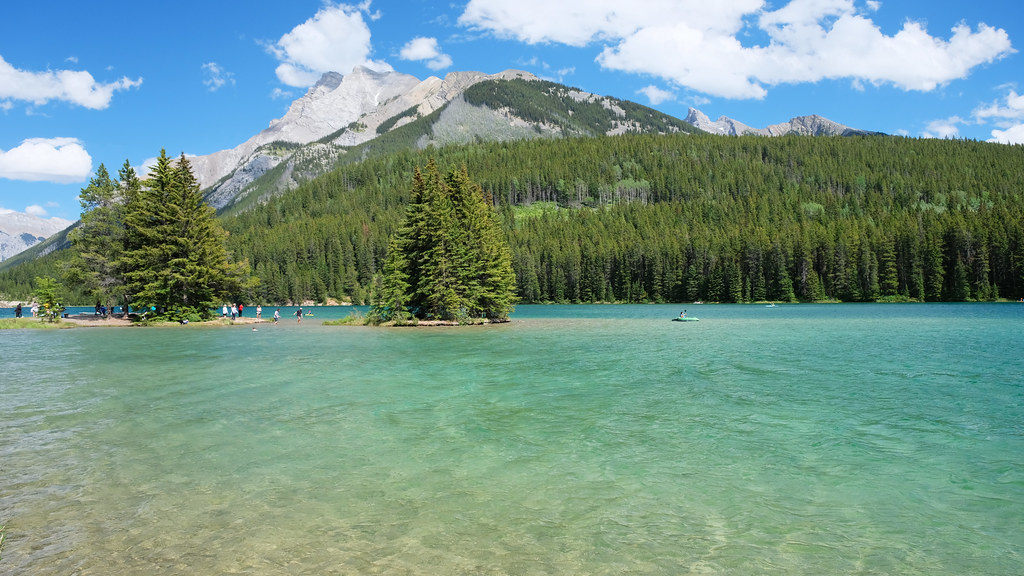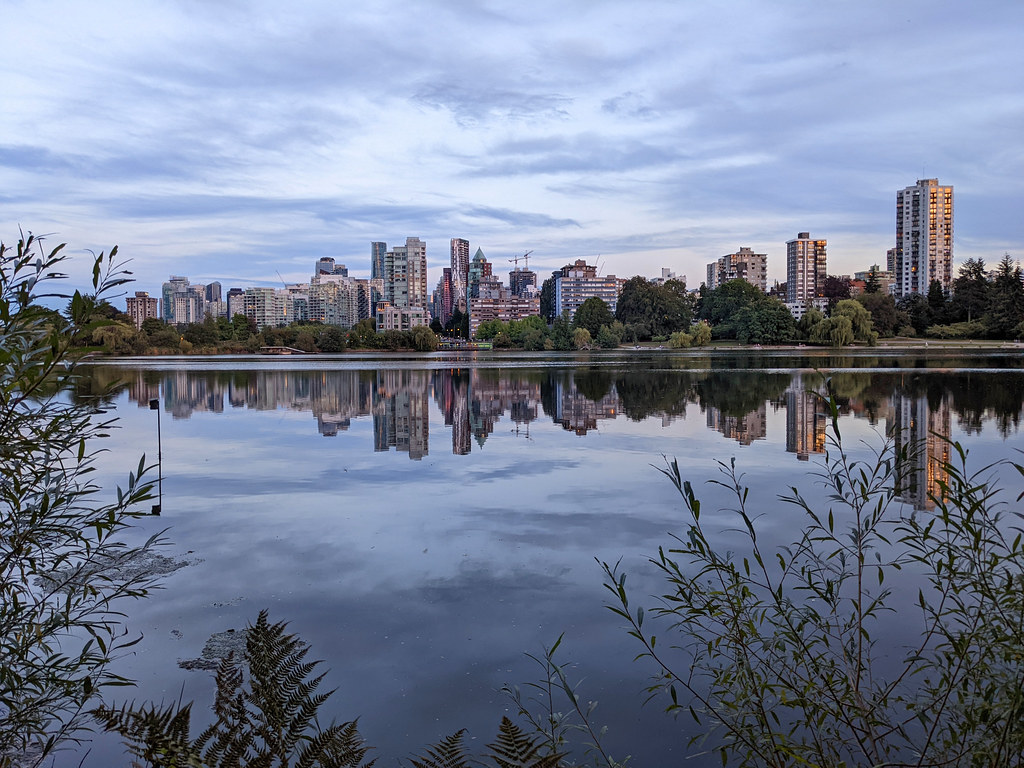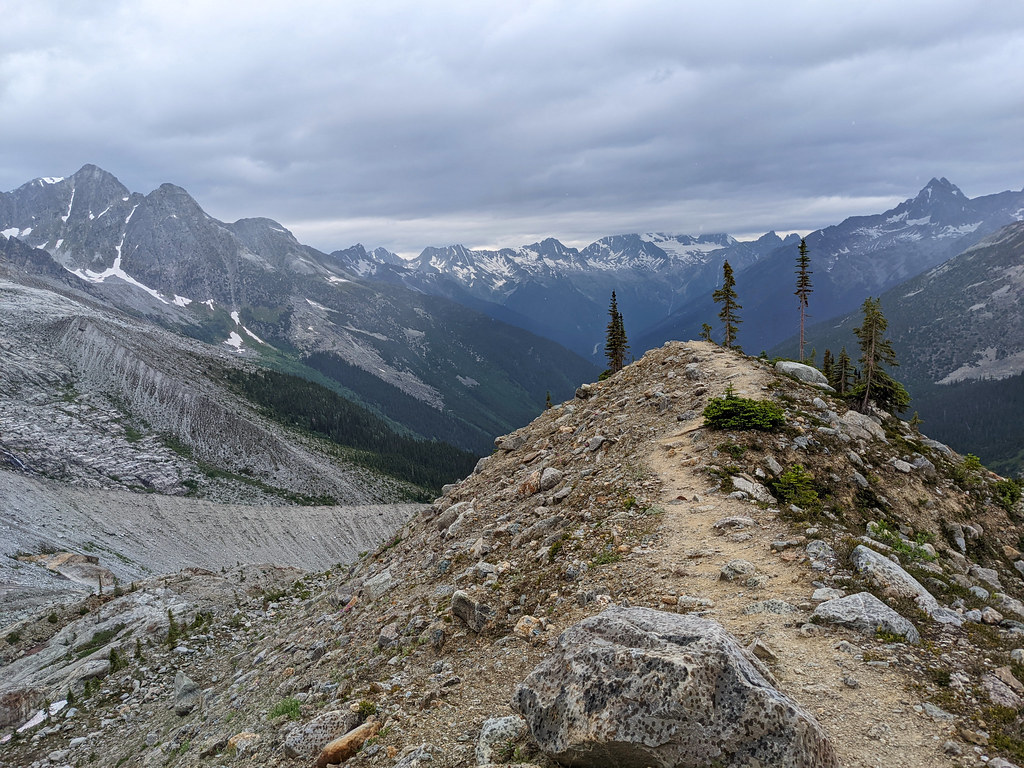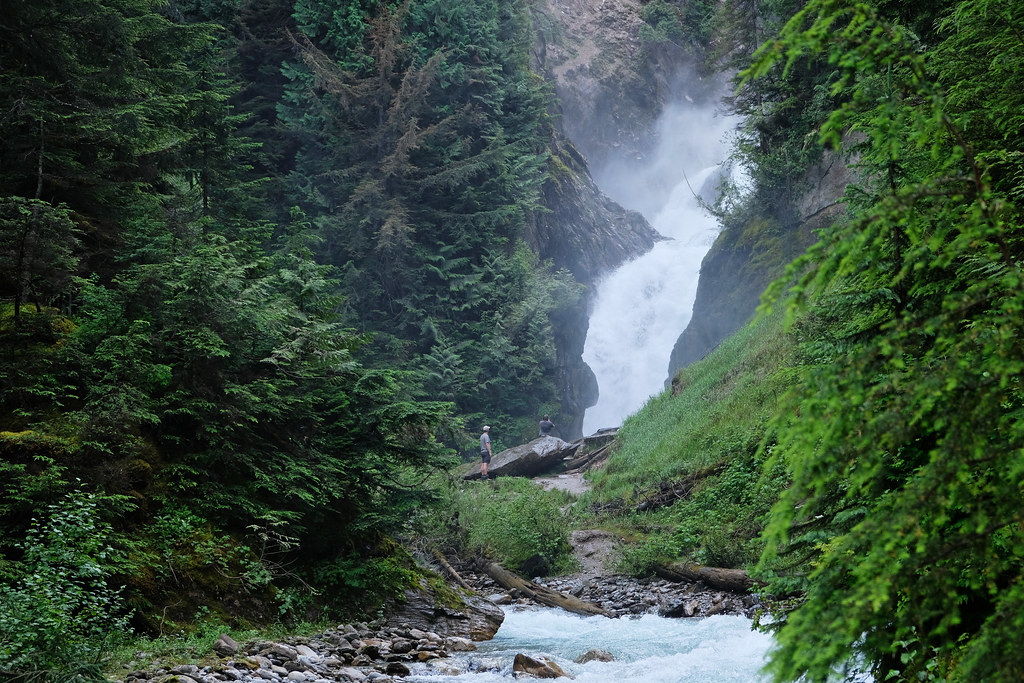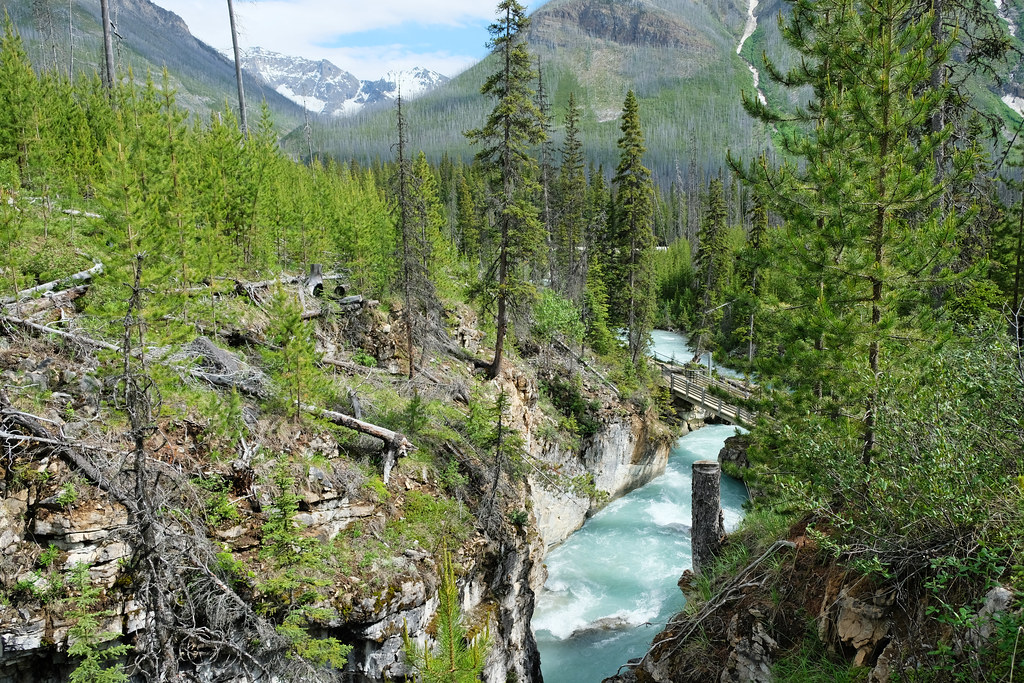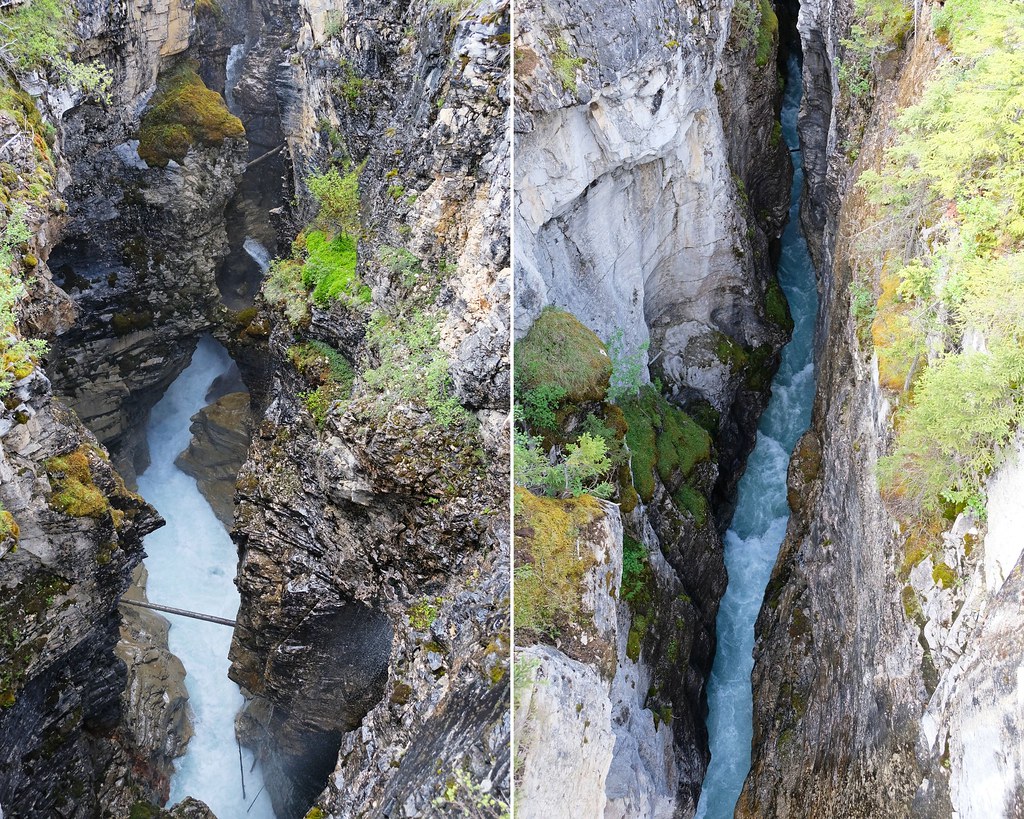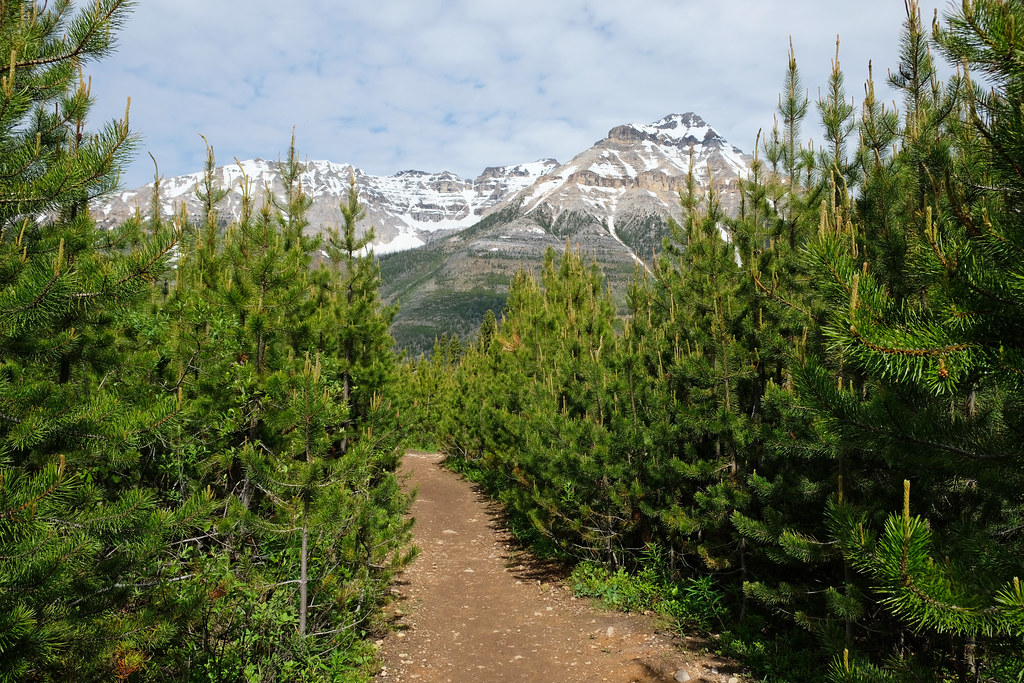The drive from Vancouver to Banff is one of the most epic drives in the world. Big words, I know. But each day on this road trip seemed to be the best one, and each one felt to be even better than the last. And I also have a long article to prove and explain, just keep on reading.
First of all, Vancouver is a great place to start your Western Canada road trip. It’s a beautiful city with a large international airport. Then you continue your way by the ocean and in the mountains, among towering trees, snowy peaks and glacial lakes. Getting from Vancouver to Banff is a long drive, but with wonderful stops along the way.
How many days do you need for a road trip to Banff from Vancouver? Which route to choose and which are the best stops? We created this Vancouver to Banff road trip itinerary to answer all of your questions and help put together your most perfect itinerary.
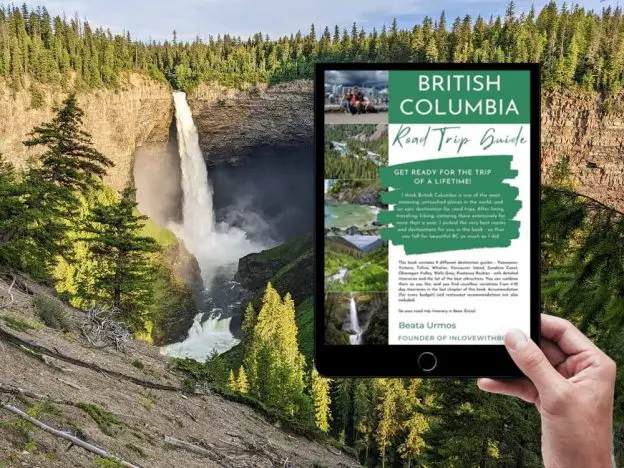
Do you find planning your British Columbia road trip a bit overwhelming?
What if I told you that someone has ALL the planning done: get our compact, easy BC Road Trip Guide! Read it, then go and enjoy.
Overview of the Vancouver to Banff road trip
How much time do you need for the Vancouver to Banff drive?
The estimated driving time (without unexpected delays due to traffic and weather conditions) is 10.5 – 12 hours from Vancouver to Banff, depending on the exact route you choose. And which is the most scenic route? From Vancouver to Whistler on the Sea to Sky Highway, then to Kamloops, Revelstoke, Golden and finally Banff – see it on a map here.
We recommend having at least 10 days for this road trip, but two weeks (or more!) is even more ideal. If you have some of the stunning day hikes on your bucket list, each one adds another day. Additional hikes and sights are endless, so I guess, your limited time will be the base to work with.
The basic Vancouver to Banff road trip itinerary in this post is created for 10 days, but you find optional activities in each section, so you can easily (oh so easily!) make it longer:
- Vancouver (2 nights)
- Whistler (1 night)
- Revelstoke (1 night)
- Glacier National Park (1 night)
- Yoho National Park (1 night)
- Banff (4 nights)
Of course, adjust this Vancouver to Banff itinerary to your preferences. If you like cities, add another night in Vancouver and leave out either Revelstoke or Glacier National Park. If you prefer nature to cities, spend only one night in Vancouver and add another to your stay in Whistler. I honestly think that all of these places are wonderful, and my goal was to create a balanced itinerary so that you see a bit of everything (hah, not even close to EVERYTHING, but you get it… right?).
When to do the Vancouver-Banff road trip?
The drive itself is on highways, mostly the Trans-Canada Highway, which are open year-round. However, there are several things to consider when you choose the best time to visit.
First of all, if you’d like to see the alpine lakes of Banff in their most turquoise glory, you should visit in the summer. These lakes are frozen and covered in snow for long months, and most of them thaw only by mid-June. They freeze over again around November.
Prime summer days (from mid-June until late September) are also the time when all roads and hiking trails are open and accessible. You should be prepared for some snow on higher elevation trails even in July.
Add pleasant, warm days to all of the above, and you’ll understand why summer is so-so crowded in the Canadian Rockies. Accommodation should be booked well in advance, parking lots fill up easily, prices are expensive, roads get congested and even some of the trails feel busy. We visited Banff in early July, and despite the prices and crowds, we’d do it again as a first visit. Also, most parks in this Vancouver to Banff drive itinerary are best (or only accessible) during the summer.
The drive from Vancouver to Banff is possible in winter, but you might not want to do it. You need some winter driving experience, and you should expect delays or suddenly difficult driving conditions due to the unpredictable weather (heavy snow, slippery roads, avalanches). Would you feel confident driving in a snowstorm? Do you have winter tires? (They are required as soon as you leave the city of Vancouver between November and March.) Could you handle unexpected, long delays?
Winter is as much high season in Banff as summer. It offers different activities, but it offers a lot. However, you might want to fly to Calgary and only drive about 1.5 hours from there, or take the 2-day sleeper trains that go directly from Vancouver to Banff.
Where to stay while driving from Vancouver to Banff?
Whether you plan to stay in hotels, lodges or campgrounds, make your reservation well in advance, especially if you’re visiting from June to October. (Yes, even for campgrounds! Except for a few first come first serve campgrounds, you must reserve ahead, and they fill up insanely quickly.) If you want flexibility to filter by budget and location, book at least 6 months prior.
Want help planning your BC road trip?
- Get the BC Road Trip Guide eBook.
- Use the easy-to-follow itineraries.
- Go and enjoy your trip.
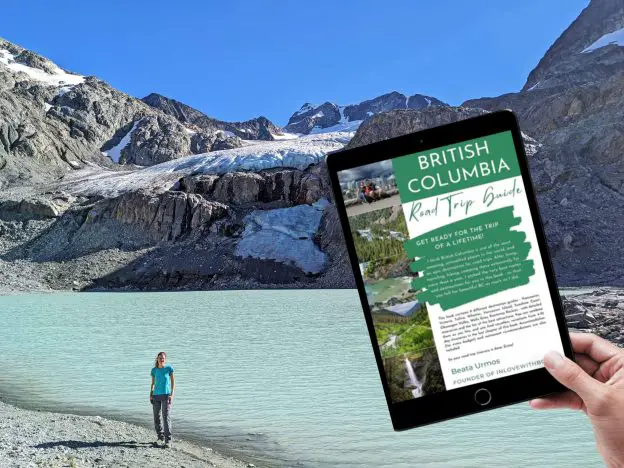
Do you need a car?
For a road trip?! Sure, what a dumb question. Actually, it’s a valid question. Because a popular choice to cover both car rental and accommodation is renting a campervan! It allows you to be closer to nature and take advantage of the great location of many campgrounds. If you travel with your family or a group, it might be the most cost-effective way to travel.
Since we had our own car and tent equipment to explore British Columbia, we used it on our Canadian Rockies road trip, as well. But honestly, it’s chilly at nights even in the summer, and a campervan would have given more protection against the weather than our tent. If you fly to Vancouver (or Calgary), bringing a tent is most probably not a feasible option, anyway.
But if you prefer staying in actual rooms with four walls, definitely rent a car.
DO YOU NEED A CAR FOR YOUR ROAD TRIP? SEARCH, COMPARE AND SAVE:
Discover Cars is one of the world’s largest online car rental platforms with vehicles in 10,000+ locations. Compare the best rates here.
Is there an entrance fee to national parks?
Yes, entry fee is required when visiting the national parks of Canada. Since this basic itinerary contains several of them – Mount Revelstoke, Glacier, Yoho and Banff National Park -, and you can easily add others nearby – like Jasper or Kootenay -, it’s probably worth getting The Discovery Pass. This is the annual pass for Canada’s national parks which allow entry to over 80 sights in the country.
Best stops on a Vancouver to Banff road trip
While you can technically do this drive in one day, where’s the fun in that? The road is just as exciting and wonderful as the destination. Let’s see the best Vancouver to Banff road trip stops.
Vancouver
Having lived in Metro Vancouver, I know we are biased, but really, it’s one of the most beautiful cities in the world. What’s exactly there to impress that much? The views!
Yes, Vancouver is a big city, but it’s connected to the ocean and the mountains, and it’s also a very green city with an incredible number of pedestrian-friendly areas. You’ll be surrounded by nature wherever you go. Just the right way to start this Western Canada road trip, dominated by breathtaking natural beauties.
Best accommodations in Vancouver:
- Luxury: OPUS Vancouver (central location)
- Mid-range: O Canada House Bed & Breakfast
- Budget: Samesun Vancouver (central location)
Our TOP 5 sights in Vancouver
Stanley Park: what, a park as a highlight?! Stanley Park is not simply a park, it impresses with skyline views, beaches, towering trees, gardens and its famous seawall. Find out why it’s such a great place and how to see the best of it here.
Canada Place: again, a convention center and a ferry terminal?! Canada Place is much more. This iconic structure looks like a sailboat and offers pretty views of the North Shore, Stanley Park and the Burrard Inlet. Walk The Canadian Trail on its west promenade, you can learn about Canada and Vancouver’s history in addition to the views.
Gastown: it’s the historical district of Vancouver Downtown, with beautiful Victorian buildings, countless restaurants, bars and art galleries. Don’t miss the Steam Clock which is the oldest of its kind in the whole world. (Also, the Gastown Steam Clock appears on the cover of the Nickelback album Here and Now. They were one of my favorite bands as a teenager.)
Charleson Park & Olympic Village: it’s outside of Downtown Vancouver, but it has the best views of it. The waterfront pathway along False Creek is part of the Seaside Greenway, and walking this path from Charleson Park to the Olympic Village treats you with the best skyline views of the city.
Lynn Canyon Park in North Vancouver: technically not in Vancouver, but it’s part of the metropolitan area, and you simply can’t leave Vancouver without seeing its magnificent rainforests, walking through a suspension bridge, gazing at turquoise waters. Here’s everything you need to know about Lynn Canyon and Lynn Valley.
More things to do in Vancouver
Beaches: not really swimming beaches due to the cold water temperatures and often chilly weather, but they still offer nice city, ocean and sunset views. Our favorites are English Bay Beach, Third Beach in Stanley Park and Kitsilano Beach.
Granville Island: despite being called “island”, technically it’s a peninsula. It’s an exciting, quirky place: an old industrial district turned into a colorful place boasting restaurants, shops, green spaces, a large indoor market and skyline views.
Science World: dive into the wonders of science and nature in this cool museum.
Dr. Sun Yat Sen Chinese Garden: a beautiful, traditionally constructed Chinese Garden.
Capilano Suspension Bridge Park in North Vancouver: if you’d like to walk the 140 meters long suspension bridge over the Capilano River, do the thrilling Cliffwalk and explore the several smaller bridges across the giant trees, this park is for you.
Kayaking in Deep Cove: enjoy a calm fjord surrounded by endless pine forests and towering mountains. Enjoy it from the water! Even if you don’t have a few hours to do a kayak tour, stop in Panorama Park.
Whale-watching tour: Vancouver is along the migration route of several whales which makes it one of the best places in the world for whale-watching. The migration season is from March to October. You have a chance to see orcas, too.
Check out our 3 days itinerary to see the best of Vancouver!
Do you need to rent a car to explore Vancouver?
Not for the downtown, biking is the best way to get around there and along the Seaside Greenway. However, if you visit North Vancouver (Capilano Suspension Bridge Park, Lynn Canyon) or West Vancouver, it’s more convenient by car. You can catch a bus – which takes longer, but you don’t need to deal with parking.
And then you really start your road trip. The best driving route from Vancouver to Banff starts with the Sea to Sky Highway…
Sea to Sky Highway from Vancouver to Whistler
Nestled between ocean and mountains, BC Highway 99 is nicknamed the Sea to Sky Highway, and it’s one of the most epic drives not only in Canada, but all over the world. I know, I shouldn’t use too many superlatives. But our road trips in Canada were all about superlatives. Wild and beautiful nature in this country is hard to beat. If towering cliffs, snow-capped peaks, endless pine forests, foggy bays and ocean sunsets impress you, then the Sea to Sky Highway will impress.
Read our super long and detailed guide about the Sea to sky Highway here!
Only have time for the very best, short stops? Consider these:
Porteau Cove Provincial Park: walk out on the pier for spectacular views of Howe Sound and watch seabirds while walking on the rocky beach. There’s no hiking trail in this park, and the pier is right by the parking lot, so it could be a brief stop.
Shannon Falls Provincial Park: the viewpoint for 335 meters high Shannon Falls is right by the road and accessible by a short walk (you can catch a glimpse of the falls even from the highway).
Sea to Sky Gondola: aptly named, this cable car takes you from the sea to the sky, from the highway up past giant granite cliffs to the Summit Lodge. Any direction you’ll look, you’ll see mountains, snow-capped until late summer. The view over Howe Sound just adds to the magic. The viewing platform is right by the upper station of the cable car, you can also stroll across the Sky Pilot suspension bridge and hike several shorter and longer trails that start there.
Tantalus Lookout: a rewarding and easy stop, but only if you are driving southbound from Whistler to Vancouver, because left turn is forbidden on the northbound route.
Garibaldi Provincial Park: a famous, but not at all a short stop. The hike to Garibaldi Lake takes a full day, just like most of the other hikes in the park. We still highly recommend them if you have an extra day – and can get a day pass. (Our best tip for fetching a free day pass: avoid summer weekends!)
Brandywine Falls Provincial Park: another easily accessible, very picturesque waterfall. Brandywine Falls is not nearly as tall as Shannon Falls (“only” 70 meters), but it’s powerful and it’s a single drop waterfall, backed up by lava columns. You need to walk about 300-400 meters to reach the viewing platform from the parking lot.
Nairn Falls Provincial Park: already past Whistler Village, Nairn Falls is 60 meters high, and the short trail starts just off of the highway.
Best accommodations in Whistler:
- Luxury: The Westin Resort & Spa (top location)
- Mid-range: The Listel Hotel
- Budget: Pangea Pod Hotel (capsule hotel at excellent location)
Kamloops
The next stop on your 10 day road trip from Vancouver to Banff is Kamloops. It’s about a 4-hour drive from Whistler, and you’ll be happy to stretch your legs by then.
Kamloops is not exactly a city where there’s much to see, but there are over a hundred lakes less than an hour drive from it. Shuswap Lake, Kamloops Lake, Paul Lake, Lac le Jeune, Roche Lake, Adams Lake or Heffley Lake are just a few where you can stop and have a swim, or spend half a day chilling out on one of their beaches if you have the time. Famous Okanagan Lake is not too far either. The weather is very hot in this region in the summer, and most of the lakes have quite pleasant temperatures.
We were honestly surprised what a perfect beach region we found here, and it’s a very different experience compared to the Canadian Rockies.
Best accommodations in Kamloops:
- Luxury: Wingate by Wyndham Kamloops
- Mid-range: Fairfield Inn & Suites by Marriott Kamloops
- Budget: Grandview Motel
Mount Revelstoke National Park
Mount Revelstoke towers above the city of Revelstoke – which will be on your way, anyway. The other specialty of this lesser-known national park is that you can drive straight up to the peak of Mount Revelstoke. Meadows in the Sky Parkway is a 26 kilometers long paved road that takes you up almost to the summit, offering wildflower views already from the road, and also some viewpoints and trailheads on the way. But the real highlight is where the road ends.
The summit area has a few short and very easy nature trails, like the Upper Summit Trail, Balsam Lake Trail or Heather Lake Trail. This is what we recommend to explore if you only have a few hours in the park.
What if you have a full day to spend in Mount Revelstoke National Park? Take the Miller, Eva & Jade Lakes Trail. This series of three alpine lakes is a full day hike, and you can choose the number of lakes that you’d like to hike to, so the difficulty of the trail is adjustable, but the scenery is guaranteed to be magical.
We hiked to Miller Lake and Eva Lake. They are relatively close to each other, and though they are somewhat similar, we think it’s worth visiting both. Miller Lake has several small islands where you can walk to (if you take your shoes off). Eva Lake also has an island, and it’s possible to walk all around the lake. We find both of them wonderful! We missed Jade Lake, because it would have added quite some elevation gain, and we carried a 20 kg toddler.
Helpful side note: take bug spray to the summit of Mount Revelstoke, and also to the lakes.
Then stock up on everything, including gas, when you leave Revelstoke, as there’s not much service between Revelstoke and Golden. Revelstoke Mountain Resort offers skiing opportunities in winter.
Best accommodations in Revelstoke:
- Luxury: Sutton Place Hotel Revelstoke Mountain Resort
- Mid-range: Swiss Chalet Motel
- Budget: Alpine Inn & Suites
Glacier National Park of Canada
Alpine scenery, rushing creeks, dramatic peaks and close views of glaciers – that’s what you find in Glacier National Park (the one is British Columbia, not the one in Montana, because both Canada and the USA have national parks with the same names). It’ll impress even if you only drive through it, but we highly recommend stopping for at least a short hike.
Get soaked in the mist of Bear Creek Falls, hike to the toe of Illecillewaet Glacier, gaze at the reflections at Marion Lake. But our very favorite trail? Asulkan Valley, an alpine paradise from the first step to the last!
You can either camp in Glacier National Park, or book something in Revelstoke or Golden, because there’s no accommodation inside the national park.
Easy-moderate trails:
- Bear Creek Falls: 1 km, trailhead is 9 km east of the Rogers Pass Discovery Center
- Meeting of the Waters nature trail: 1.3 km loop, trailhead is at Illecillewaet Campground
- Loop Brook Trail: 1.7 km loop, trailhead is at Loop Brook Viewpoint
- Marion Lake Lookout: 5.5 km return, trailhead is at Illecillewaet Campground
- Great Glacier Trail: 7.9 km return, trailhead is at Illecillewaet Campground
More challenging trails:
- Asulkan Valley Trail: 14 km return, trailhead is at Illecillewaet Campground
- Hermit Trail: 6 km return
- Balu Pass: 11 km return
Best accommodations for Glacier National Park:
- Luxury: Sutton Place Hotel Revelstoke Mountain Resort (Revelstoke) or Golden Acres Mountain Lodge (Golden)
- Mid-range: Swiss Chalet Motel (Revelstoke) or Holiday Inn Express Golden-Kicking Horse (Golden)
- Budget: Alpine Inn & Suites (Revelstoke)
Yoho National Park
As you reach Yoho National Park you’re already close to the border of Banff (and Alberta). But don’t rush through Yoho too fast, because it has sights that can easily compete with those you’ll find in Banff National Park. It’s already in the mountain paradise called the Canadian Rockies. Here are the most popular places to visit:
Emerald Lake: the largest lake in Yoho National Park, named after its beautiful emerald waters. The backdrop is not bad either: Mount Burgess and Wapta Mountain towering above the lake. No hiking is required, you can drive directly to the shore of Emerald Lake, and there’s an easy, flat loop trail (~5 km) around it. You can also rent canoes.
Takakkaw Falls: with 373 meters (1224 feet), it’s the second tallest waterfall in British Columbia (and in Canada, too, as the tallest waterfalls are all in BC – what a surprise! well, not… :D). Fed by the melting water of Daly Glacier, it’s rushing all summer and can be accessed on a short walk.
Yoho Valley: you can see this stunning valley as you drive to the parking lot at Takakkaw Falls. Then you can hike above it on the Iceline Trail. No matter which angle you choose, Yoho Valley is spectacular!
Natural Bridge: this rock formation can be a short stop on your way to Emerald Lake. The sight of Kicking Horse River cascading under the naturally formed stone bridge and the snow-capped peaks in the background are postcard-perfect.
Wapta Falls: 30 meters high, wide and powerful Wapta Falls is a great family-friendly hike in the park.
Lake O’Hara: the only attraction in this list that we haven’t visited, because it has very limited access due to its delicate ecosystem. You need to make a shuttle reservation to get there, and the availability is limited. (We heard about people who’ve been trying to fetch a shuttle ticket for years, without success. You can try – good luck.) Once you’re there, it’s a paradise, they say, and a starting point for lots of wonderful trails.
Best accommodations for Yoho National Park:
- Luxury: Emerald Lake Lodge (Yoho National Park)
- Mid-range: Canadian Rockies Inn (adults only, located in Field)
- Budget: camping 🙂
Banff National Park
Here we are, in famous Banff. This national park truly deserves all the hype, as it gives access (and easy access!) to the heart of the amazing, unforgettable, epic, phenomenal (should I continue?) Canadian Rockies. If you love mountains, you can’t not love this park! But you need to be prepared and plan your visit carefully to make it the most enjoyable.
All the wonderful places and trails in Banff National Park would be worth its own (and very long) blog post, but I’m giving an overview of the most popular ones here. It’s a good starting point, and you can’t see everything in a few days, anyway.
Best accommodations for Banff National Park:
- Luxury: Fairmont Château Lake Louise (top location)
- Mid-range: Lake Louise Inn
- Budget: Banff Boutique Inn (in the town of Banff)
Lake Louise
It’s among the most iconic natural sights in the Canadian Rockies – and probably in all Canada. Sitting at 1750 meters, it thaws in early June, and the glaciers also start to melt this time, giving Lake Louise those magically turquoise hues.
You can drive directly to the lake – oh, wait, you can’t. Lake Louise has one serious disadvantage: the crowds. It makes it extremely hard to find available parking space near the lake in the summer, so you need to do some planning to make your visit go smoothly. Either arrive very early (before 7 am in July and August) or reserve a shuttle. This shuttle is for both Lake Louise and Lake Moraine, and the service operates in order to solve the parking problems. The Lake Louise Ski Resort is used as a Park & Ride in the summer season, and you take the transfer bus to the two popular lakes from there. But you need to make a reservation for the shuttle in advance.
Once you’ve left your car behind though, Lake Louise is a delight! The lakeshore is beautiful, and you can walk on the easy lakeshore trail, sit on the benches to have a picnic or rent a kayak. Spectacular trails start there, like Lake Agnes Trail, the Big Beehive or the Plain of Six Glaciers – and you can even combine all of them into a full day loop hike.
Lake Moraine
The other star of the park. The view of Lake Moraine surrounded by the Valley of the Ten Peaks is unforgettable and was immortalized on Canada’s twenty-dollar bills. It’s a glacial lake, just like many others in the area, and it impresses visitors with incredibly turquoise colors.
The best viewpoint (the “twenty-dollar view”) is from the top of the Rockpile. It’s a few hundred meters walk, and it includes several series of stairs and offers various viewpoints. The lakeshore trail is fabulous, too, as it runs directly on the shore and treats you with lake views all the way. Also, there are lots of trails of varied length and difficulty that start from Lake Moraine.
Parking is even more difficult than at Lake Louise, because the parking lot is very small and parking on the road shoulder is not allowed.
Peyto Lake
Peyto Lake is a gem almost by the road along the Icefields Parkway. You can’t easily get to the lakeshore, but the views of the lake from above are the best, anyway. Look for the parking lot on Bow Summit Road, and walk a few hundred meters to the viewing platform on a steadily ascending paved path. Then follow the trail to the second viewpoint. There’s no viewing platform there, but you find a large clearing with stunning views (and much less crowd than at the first one).
Johnston Canyon
Johnston Canyon was our favorite canyon hike in the Canadian Rockies. You can get really close views of the canyon walls and partly walk inside the canyon on catwalks. The two powerful waterfalls, Lower and Upper Falls, are the bonus. The 5.1 km return trail is family-friendly and quite an easy route for the average hiker. Also, it’s accessible year-round.
Bow Lake
Bow Lake, located at 1920 meters above sea level, is right by the road as you drive the Icefields Parkway. You can see it from the road, but I definitely recommend pulling over to enjoy the views. It’s one of the best roadside stops!
Bow Glacier in the Wapta Icefield feeds the lake, and Bow Summit towers above it, so you get dramatic, snow-capped peak views and magically turquoise water colors.
Banff (the town)
One of the cutest mountain towns ever, the magic of Banff town is the views it offers. Stuff your face with delicious food on the main street, walk along Bow River, drive to Bow Falls and Surprise Corner viewpoints on the outskirts of the town. And wherever you go, look up and gaze at the mountains.
Two Jack Lake
About 15 minutes drive from the town of Banff and right by the road, Two Jack Lake is a wonderful emerald green lake with views of Mount Rundle as a backdrop. It’s popular for water sports like kayaking, canoeing, SUP or fishing. (It’s also a glacier-fed lake, so it’s too cold for swimming.) The 4.7 km return trail on the lakeshore is surprisingly quiet, very scenic and almost completely flat.
Banff Gondola
This scenic cableway takes you to the summit of Sulphur Mountain where a 360 degree rooftop observation deck awaits, with panoramic views of the town of Banff, Bow River and the surrounding mountains.
Parker Ridge Trail
If you only have time for one hike along the Icefields Parkway, hike the Parker Ridge Trail to Saskatchewan Glacier. This 6.4 km round-trip hike offers breathtaking scenery from the very first step to the last: snowy peaks all around, the Icefields Parkway and Saskatchewan Glacier below. You get 360 degrees peak views once you reach the ridge.
Get the BC Road Trip Guide eBook and enjoy the trip of your lifetime in British Columbia.
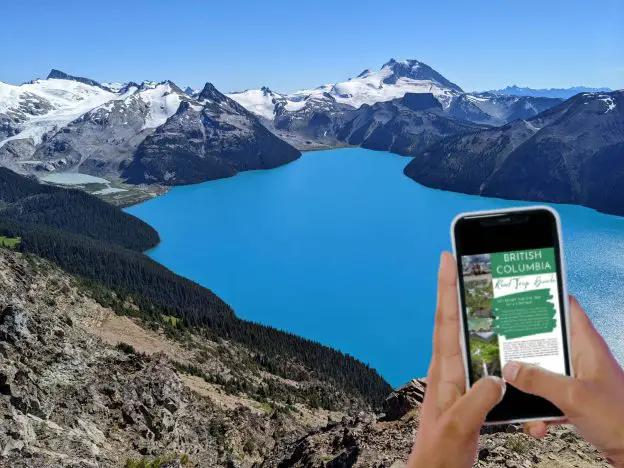
Vancouver to Banff drive in 10 days
After giving a taste of what this road trip from Vancouver to Banff could offer, let’s see our 10 days itinerary. Please note that times are indicative, the goal is to help you plan how much time you need for a certain attraction, and it’s an average. You may spend less or more time at any place.
Day 1-2: Vancouver
the view of Vancouver Downtown from the lakeshore of Lost Lagoon
Hold on to renting a car just yet, rent a bike instead to explore Vancouver Downtown and the Seaside Greenway on the first day. Here you find our detailed Vancouver sightseeing itinerary, we recommend choosing Day 1 and Day 3. You can pick your rental car up for Day 3 as it’s easier to get around North Vancouver by car.
And then the trip continues from Vancouver to Banff by car.
Day 3: Sea to Sky Highway
One day is a very short time to explore the Sea to Sky Highway, so focus on the short stops and viewpoints:
- hike to the waterfalls in Cypress Falls Park, West Vancouver (8:30 – 10:00)
- stop for a morning picnic in Whytecliff Park, walk to the coastal viewpoints (10:00 – 11:30)
- drive to Shannon Falls Provincial Park, it’s about 30 minutes (11:30 – 12:00)
- visit Shannon Falls Provincial Park, walk to the two waterfall viewpoints (12:00 – 12:30)
- take the Sea to Sky Gondola, walk the Sky Pilot suspension bridge and the Panorama Trail, then have lunch in the Summit Lodge (12:30 – 16:00)
- stop at Stawamus Chief viewpoint by the highway
- drive to Brandywine Falls Provincial Park, it’s about an hour (16:00 – 17:00)
- walk to the Brandywine Falls viewing platform (17:00 – 17:30)
- drive to Alexander Falls and enjoy the waterfall lookout that’s located right in the parking lot (17:30 – 18:00)
- take a walk at Green Lake in Whistler (18:00 – 19:00)
There’s no picture of Garibaldi Lake in this section. If you only have one day, you won’t have time to see it, because Garibaldi Lake hike takes a full day for most people. See more sights and longer itineraries for the Sea to Sky Highway in this post.
Read our hiking guide to Garibaldi Lake here!
Day 4: Mount Revelstoke National Park
Miller Lake is a longer trail from the summit area
Mount Revelstoke is about 500 km from Whistler Village, so driving will take up half of your day (about 6.5 hours). Here’s what you can do with the rest of your time once you reach Revelstoke:
- drive the Meadows in the Sky Parkway to the summit parking (~40 minutes driving time, more if you stop at the viewpoints)
- hike the Upper Summit Trail (2 km return); once up there, take one of the Summit area nature trails: Koo Koo Sint Trail (1.5 km), First Footsteps Trail (1 km loop) or Heather Lake Trail (400 m)
- walk the Balsam Lake Trail (0.5 km loop)
Day 5: Glacier National Park
It’s about an hour to drive from Revelstoke to Glacier National Park, so you’ll have time for a day hike, and that’s exactly what we recommend.
Asulkan Valley Trail is almost 14 km there and back, and it challenges you with 960+ meters elevation gain. However, it’s very well worth the effort. It’s one of the most wonderful trails not only in Glacier National Park, but in all of British Columbia. You get valley views, with towering peaks and distant waterfalls (actually, melting snow) in the background, a dramatic ridge and close glacier views. It’s not a forest hike with a panorama at the top, you enjoy the views all the way.
Alternatively, if you find Asulkan Valley Trail too much for your abilities, choose several of the shorter trails. Meeting of the Waters nature trail (1.3 km loop) gives insight into the land of rushing mountain rivers and snow-capped peaks. Bear Creek Falls can be reached on a 1 km return trail. Marion Lake Lookout is 5.5 km return. It’s a steep forest trail with panoramic views at the end, and Marion Lake is a lovely stop, too.
Unless you camp in the national park, you should plan an hour drive in the evening, too, because the closest place to stay is Golden. But the good thing is that this leaves you with only about a half an hour drive to Yoho National Park the next day.
Day 6: Yoho National Park
Yoho is small compared to Banff and Jasper National Parks, so you can see all the easily reachable highlights in only one day. It might be a long day, but still, here it goes:
- drive to Wapta Falls trailhead from Golden (9:00-9:30)
- hike to Wapta Falls (4.8 km return; 9:30-11:30)
- drive to Emerald Lake, stop at the Natural Bridge viewpoint on the way (11:30-12:30)
- rent a canoe and walk part of the lakeshore trail around Emerald Lake (12:30-16:00)
- drive to Takakkaw Falls through the scenic Yoho Valley (16:00-16:30)
- walk to Takakkaw Falls (16:30-17:30)
- drive to Banff town at the end of the day
Day 7: Lake Louise, Banff National Park
The attraction for this day is not only Lake Louise, but that’s the base of the adventures.
- morning picnic on the lakeshore at Lake Louise (8:00-9:00)
- full day hike from Lake Louise: Plain of 6 Glaciers & Big Beehive & Lake Agnes Trail loop (this 18 km loop includes the Lakeshore Trail, too)
Alternatively, you can choose to do a shorter hike, like to Lake Agnes and the teahouse, or to the Plain of 6 Glaciers and back. However, this full day loop we recommend is a very scenic route, with jaw-dropping views for the most part and quite some steep uphills and downhills.
If you don’t want to hike at all, walk the flat Lakeshore Trail, then rent a canoe. However, you likely won’t need a full day at Lake Louise in this case. Drive to nearby Two Jack Lake or Lake Minnewanka.
Day 8: Moraine Lake, Banff National Park
The day at Lake Moraine could be similar as the one before: marveling at the wonderful lake, then doing a full day hike.
- view Moraine Lake from the Rockpile viewpoints
- full day hike: Sentinel Pass via Larch Valley Trail (11 km return); or Consolation Lakes (7.6 km return) if you’re looking for a shorter trail
- walk the Moraine Lake Shoreline Trail
The highlight is the lake. Don’t rush, enjoy the otherworldly colors that change throughout the day.
Day 9: Johnston Canyon Hike & Banff town
Your third day in Banff National Park includes shorter hikes and scenic stops:
- hike Johnston Canyon (5.1 km return) and drive the Bow Valley Parkway scenic route (~6 hours)
- on your way back to Banff, drive to the Vermillion Lakes viewpoints (~30 minutes)
- stop for a scenic picnic and a short lakeshore loop walk at Cascade Ponds (~1 hour)
- explore Banff town in the rest of the day: walk in the center, visit Bow Falls Viewpoint and Surprise Corner Viewpoint
Day 10: Icefields Parkway
This day is a scenic drive on world-famous Icefields Parkway that leads through Banff and continues into Jasper National Park. Stop as often as you like, but here are the named viewpoints that are certainly worth a stop:
- Herbert Lake, right by the road (9:00-10:30)
- Crowfoot Glacier Viewpoint is the next quick stop, and Bow Lake Viewpoint follows shortly after (10:30-11:30)
- Peyto Lake Viewpoint: reaching the two viewpoints is a 2 km loop hike; enjoy a picnic lunch at one of the viewpoints (11:30-14:00)
- Waterfowl Lake Viewpoint is another roadside stop, no hiking is required (14:00-14:30)
- Mistaya Canyon: 300 meters downhill trail to reach the canyon from the roadside parking (14:30-15:30)
- 30 minutes drive to another quick, but spectacular roadside attraction: the Weeping Wall (15:30-16:00)
- hike the Parker Ridge Trail that starts by the road (6.4 km round trip; 16:00-18:00)
The last day
Whether you do the Banff to Vancouver drive or not at the end of your trip depends on how you travel further. You can give your rental car back in Calgary and fly from there. Since we live in Metro Vancouver and drive our own car, we had a Banff to Vancouver road trip, as well. If this is your case, we recommend saving some of the stops for your drive back.
If you have more time, we recommend continuing to Jasper National Park after visiting Banff. Oh, and there are some stunning detours from the Icefields Parkway. Read on.
More parks to visit in the Canadian Rockies
Jasper National Park
Jasper is the largest national park in the Canadian Rockies, with even more dramatic mountain landscapes, glaciers and lakes, and groups of grazing elks by the road. You can reach it by driving northward on the Icefields Parkway from Banff, and you find many roadside attractions, scenic viewpoints and short hikes.
Athabasca Falls: 23 meters high, Athabasca Falls is far from being the highest in Canada, but it’s very powerful. Also, very picturesque, located in a canyon and backed up by snowy mountains.
Sunwapta Falls: another easy roadside waterfall attraction is Upper Sunwapta Falls. We recommend hiking to the Lower Falls, too, as they are much less crowded and just as amazing.
Valley of Five Lakes: a 4.5 km loop trail of five incredibly emerald lakes. It starts by the Icefields Parkway.
Maligne Canyon & Maligne Lake: Maligne Lake is one of the detours from the Icefields Parkway. The lake is reachable on a ~40 km drive on Maligne Lake Road. It’s a paved road and very picturesque all the way, with the option to stop at Maligne Canyon on the way.
Maligne Canyon is the deepest one in Jasper, plunging to depths of 48 meters (160 feet). You can marvel at it on a 3.7 km out and back trail that crosses six bridges.
Maligne Lake is 22 km long, and the lakeshore is so steep that there’s no trail directly on the shore. Nevertheless, you find plenty of hiking trails in the area, and you can see the lake the best from the water, by signing up for a boat trip or renting a canoe. Maligne Lake is fed by glaciers (very cold, not a swimming lake!), and its brilliant blue hues are the result of glacial meltwater. Glacial meltwater contains fine rock flour, and these tiny particles are suspended in the water, reflecting the sunlight.
Medicine Lake is a pretty stop on your drive to Maligne Lake. It’s not technically a lake, but helds the overflow glacial water from the Maligne River.
Lake Edith or Lake Annette: just a stone’s throw away from the town of Jasper, you find the two warmest lakes in the park. They are fed by an extensive underground river system, from Medicine Lake. They can warm up to 16-18°C which is a bearable temperature for swimming, especially considering that most lakes in the Rockies warm up to only 3-6°C. Lake Annette has a sandy beach.
Cavell Meadows: this is a hike and one of the most spectacular ones in Jasper! A short trail (~1.5 km return) takes you up to the face of two glaciers, Angel Glacier and Edith Cavell Glacier.
Pyramid Lake: it’s right by the road, at the foot of Pyramid Mountain and is popular for scenic walks. You can walk to a tiny island in the lake through a wooden bridge.
Keep your eyes open for elk, as there are about 1300 of them living in Jasper National Park. You don’t even need to go anywhere to see them. They regularly graze grass by the road and in the campgrounds.
Kootenay National Park
Kootenay National Park is another of the seven national and provincial parks that form the Canadian Rocky Mountain Parks World Heritage Site and already belongs to British Columbia. (The Continental Divide is the border of BC and Alberta, and also the border of Kootenay and Banff National Parks.) It’s a small one, with most attractions along the road, so you can see the best of Kootenay National Park even in a single day.
Highway 93 runs through the park. Driving it and making frequent stops is the best way to explore the park.
Marble Canyon: it’s an easily reachable, fairy tale attraction. A 1.6 km long trail takes you all around the edge of Marble Canyon and across seven cute bridges. Not all the canyons in the Rockies can be approached this well, the views of the canyon walls are unique, and there’s a waterfall awaiting at the top.
Numa Falls: it’s not a large waterfall, but incredibly powerful and surrounded by rugged rocks. The landscape gives it a boost, as well. Only 300 meters from the parking lot, you find lots of picnic benches near the waterfall, and it’s also the trailhead for the Numa Creek Trail.
Paint Pots: the acidic, cold, mineral-rich pools are nature’s pots of paint. They can be visited on a 4 km return trail, and while it’s lovely and offers the usual stunning mountain backdrop, the Paint Pots are culturally significant in the first place. Ktunaxa people made ochre paint here for generations. It’s an interesting sight, but I’ll keep “jaw-dropping” and “breathtaking” for other attractions.
Stanley Glacier Trail: if you only do one longer hike in the park, let it be this one. It takes you through an area burnt in forest fires that’s currently re-growing, then later on the trail you get an amazing view of the Stanley Glacier and the giant rock walls towering above you. It’s a 10 km return trail.
Kananaskis Country
The foothills of the Canadian Rockies are called “Kananaskis Country”, and it includes several provincial parks, wildland parks and provincial recreation areas. It’s lesser-known than famous Banff and Jasper, and much less crowded, as well. Yet even the foothills of the Rockies offer enormous, snow-capped peaks and numerous crystal clear alpine lakes. You find several campgrounds, two alpine ski areas (Nakiska and the Canmore Nordic Centre) and a network of hiking, cross-country ski and horse trails.
The most easily accessible attractions are along Highway 40, nicknamed “the Kananaskis Trail”. We spent two days in the area, and Upper Kananaskis Lake and the surrounding trails became one of our ever-favorite places in the Rockies.
